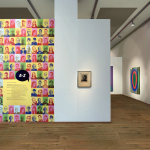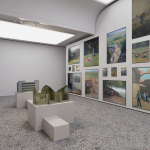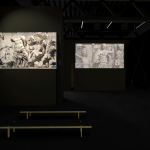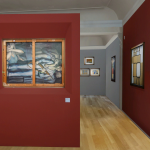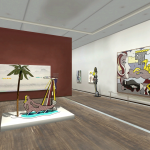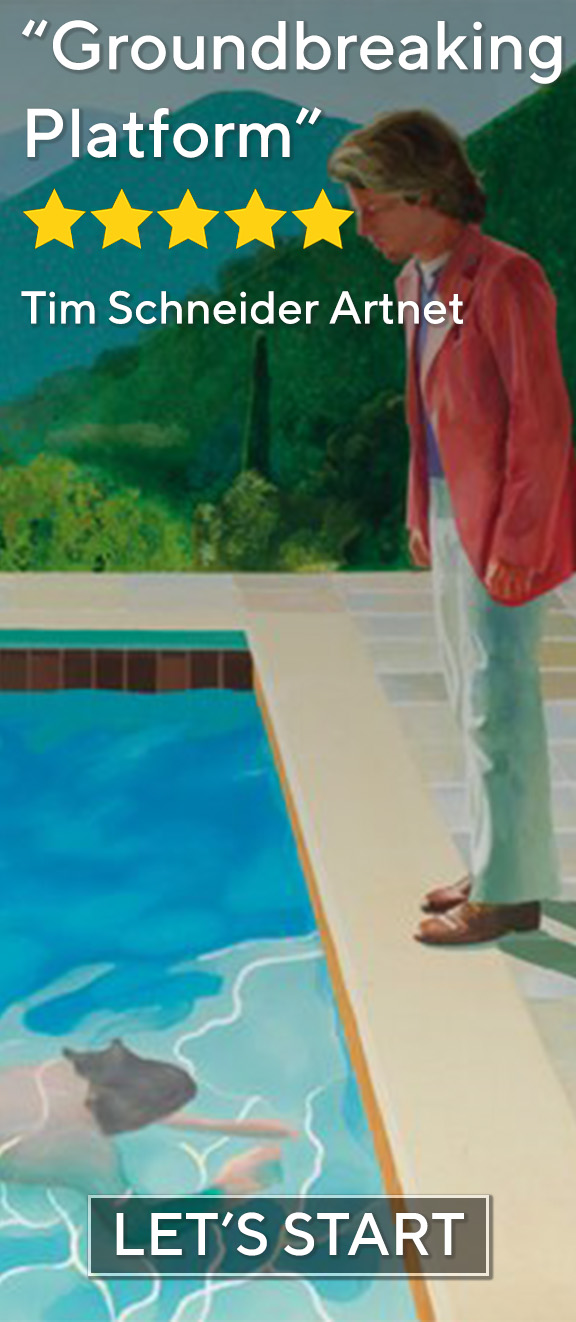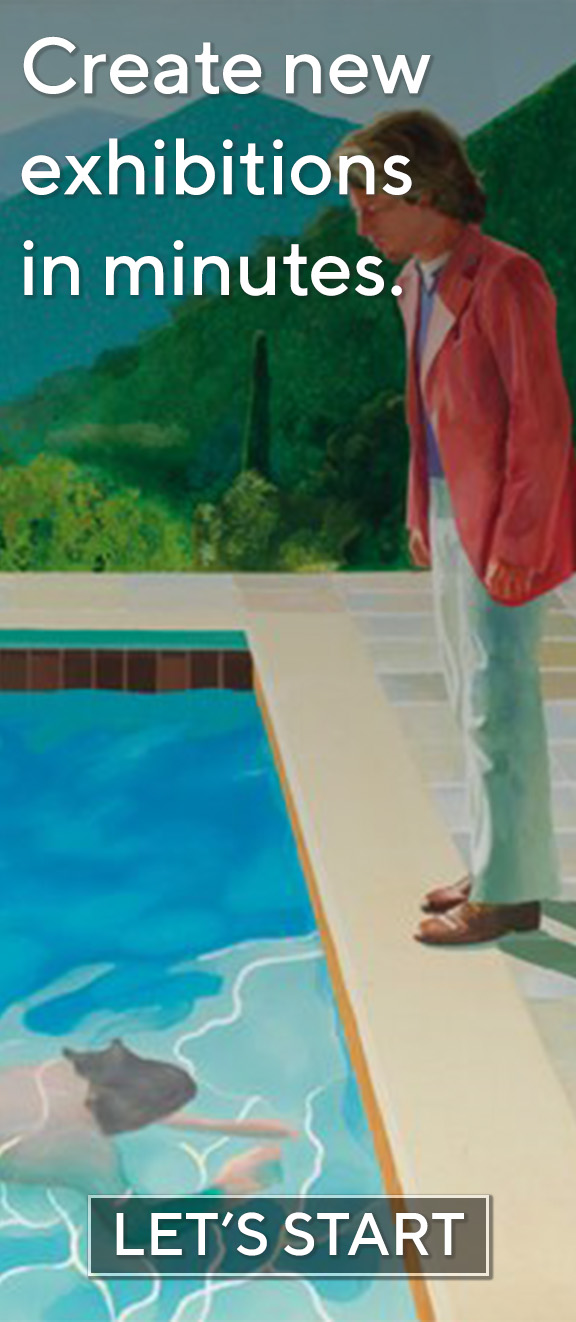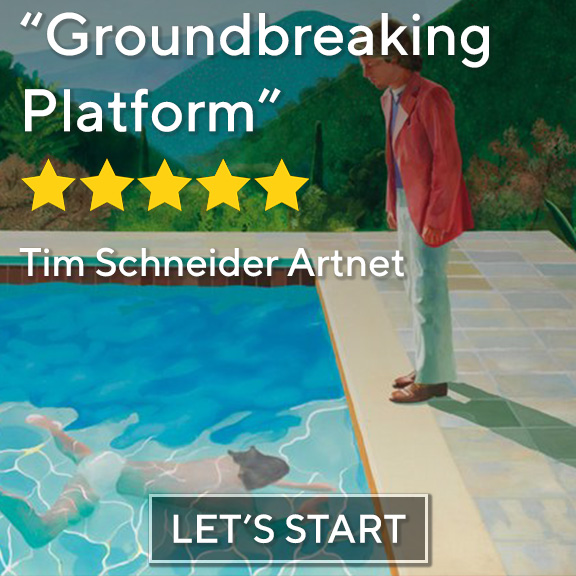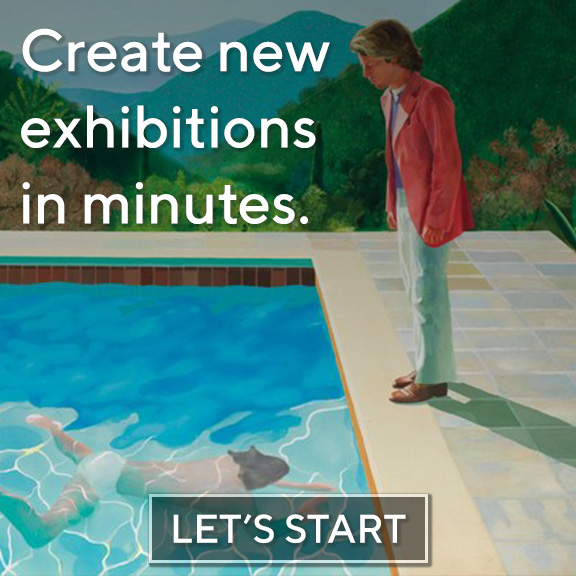Albertinum
Dresden, Germany
Gerhard Richter
This time in our series of reviews we visit Gerhard Richter’s digitized exhibition through a three-dimensional model created by Walter’s Cube. This technological innovation lets the visitors enjoy the artworks in a proportionally scaled digital twin in real time, where walking around and interacting grows into an immersive experience thanks to the Online Viewing Room.
The most ancient way to identify someone is to look at their face – that’s the first step of recognition, name only comes in second place, for evolutionary reasons. In some sense this means that a picture (a portrait) surpasses a word (a novel), but it also means that if the face is the trustee of identity then the whole identity can change or be lost in the eyes of the viewer with the alteration of a single facial feature. Realizing how important yet fragile faces are in a societal context is the focal point of Gerhard Richter’s exhibition titled 48 Portraits, which sheds a new light on the human depiction and the cultural heritage of the West.
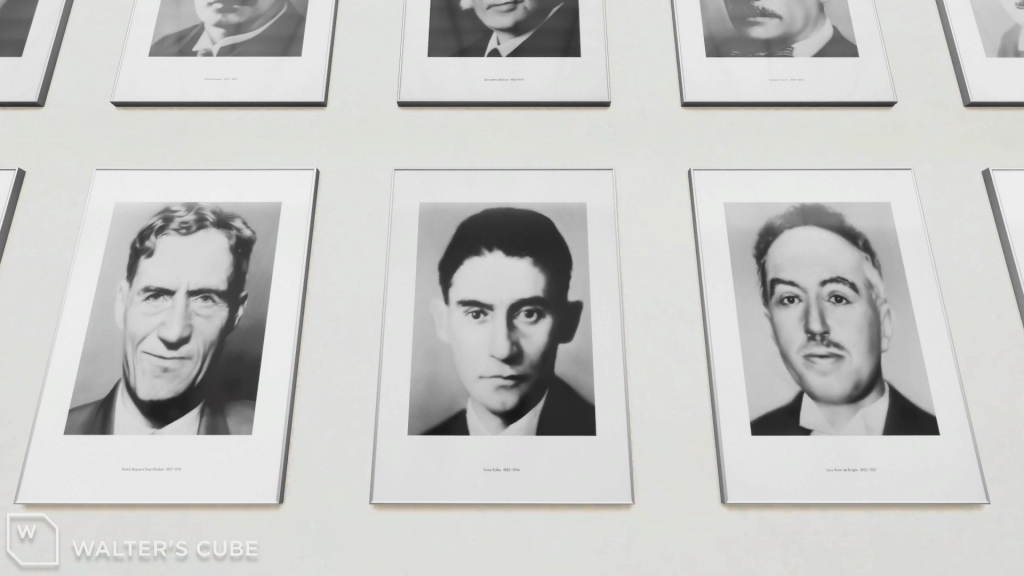
Available on the Online Viewing Room
The Albertinum in Dresden showcases the inkjet prints of the original, almost photorealistic oil paintings made for the Venice Biennale in 1972. These prints are not the first to be ever produced, but they are set apart from the previous ones by their white passe-partouts with the names of the individuals printed on it. It’s a small visual change, but carries a great meaning as it unifies the heads and the names.
The significance of this can be understood when we consider that the pictures are not really photorealistic, just almost: “I’m not trying to imitate a photograph; I’m trying to make one. And if I disregard the assumption that a photograph is a piece of paper exposed to light, then I am practicing photography by other means”, to cite Richter himself. So he has his own agenda that’s more than simply archiving famous figures like Thomas Mann and Oscar Wilde, and to achieve that he uniforms the photographs he found in encyclopaedias and lexicons.
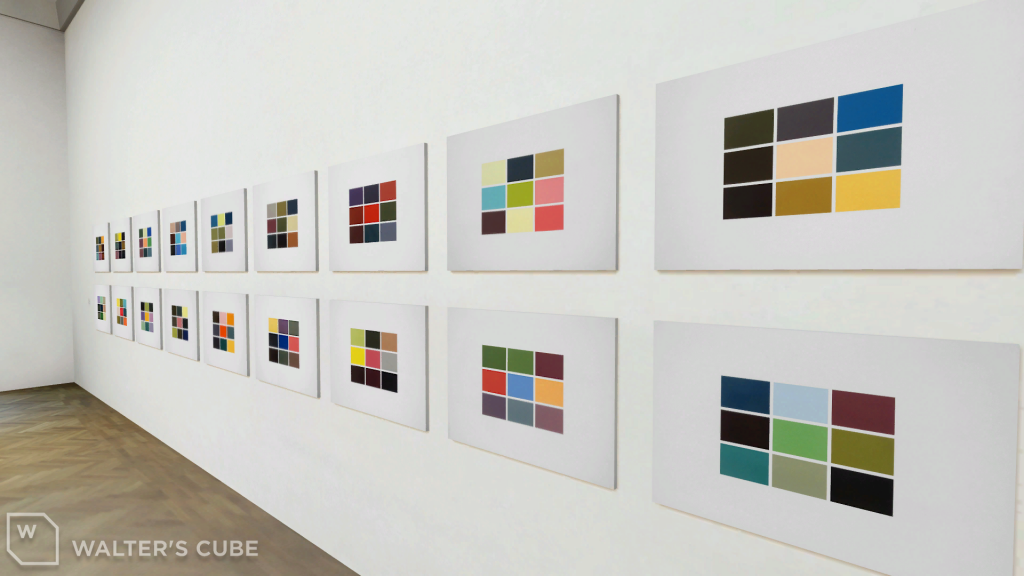
Available on the Online Viewing Room
In his Atlas, he collected around 300 portraits of American and European men before he chose the final 48 writers, philosophers, composers, and scientists that would undergo his standardizing artistic process. So they did not stay intact, he changed them (it’s no accident that Franz Kafka, the writer of The Metamorphosis is the only forward-facing figure, right in the middle): the crops, the backgrounds, the grey scales, and even the faces as he barely depicts any wrinkles or unevenness to make them appear more homogenic. This results in two things.
One, the frieze consisting of the two rows of portraits starts to mimic the colorblocks on the other wall: the uniformized faces no longer carry the identity that’s attached to the names written under them since they are not self-identical. The faces are just faces, the colors are just colors, there is no hidden meaning or interpretation: “I am interested in the speechless language of these pictures. Heads, even if they are full of literature and philosophy, become quite unliterary. Literature is invalidated; the personalities become anonymous. That’s what is important to me here.”
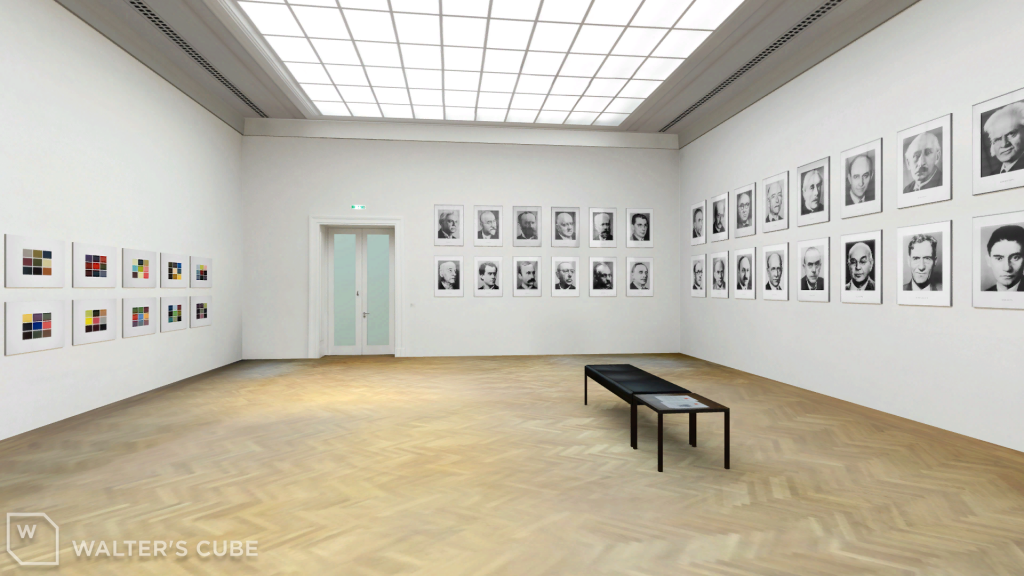
Available on the Online Viewing Room
Two, with meaninglessness and historical rootlessness the depicted figures avoid becoming political puppets as Richter avoided any ideology during and after the Nazi reign in Germany. As we pan the portraits, we might realize that politicians and artists are missing from the illustrious company: politicians, because art should not be used as a propaganda tool, artists, because they are like father figures to Richter. The male-only selection is not against women, but the sign of children and metaphorically Germany growing up without fathers after the war.


